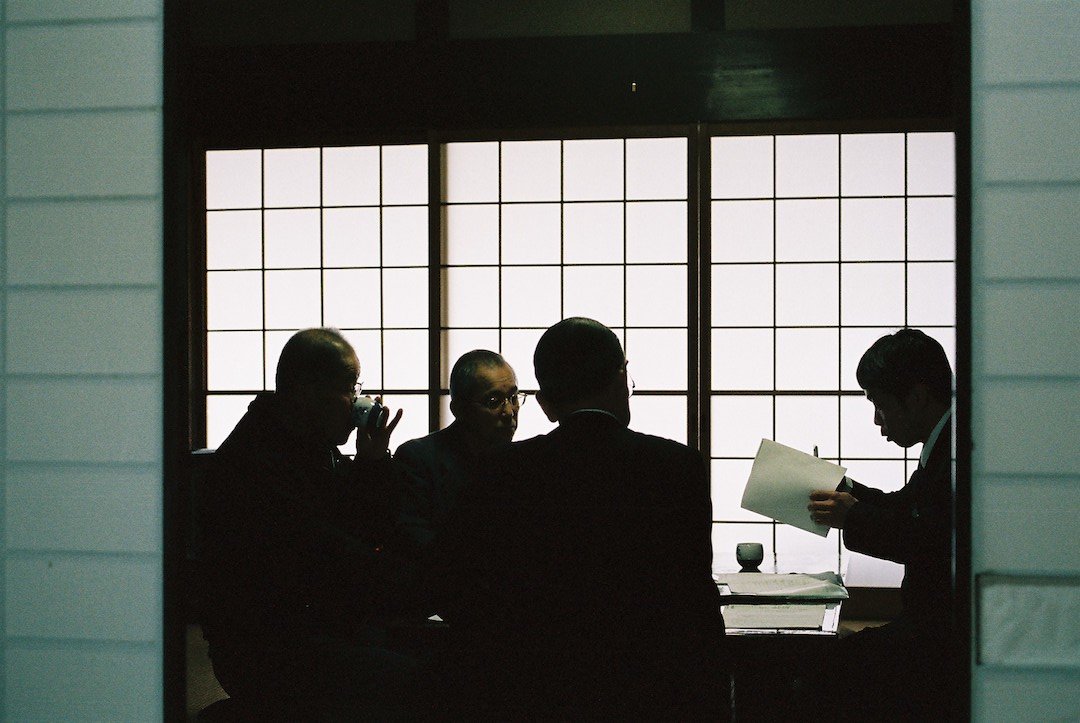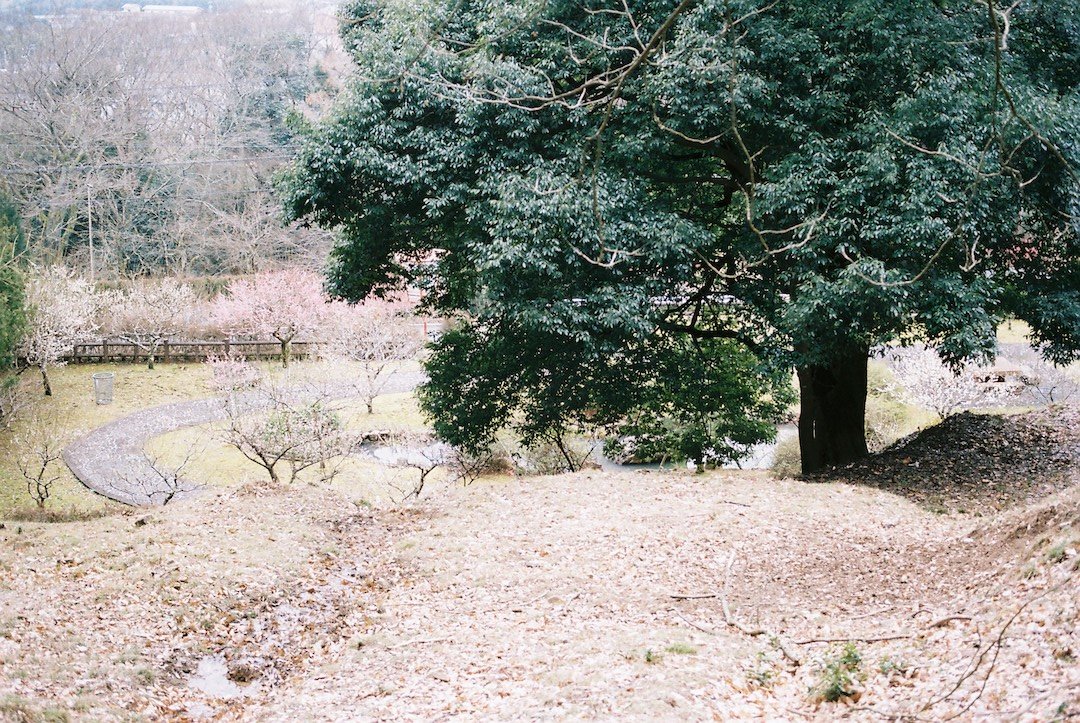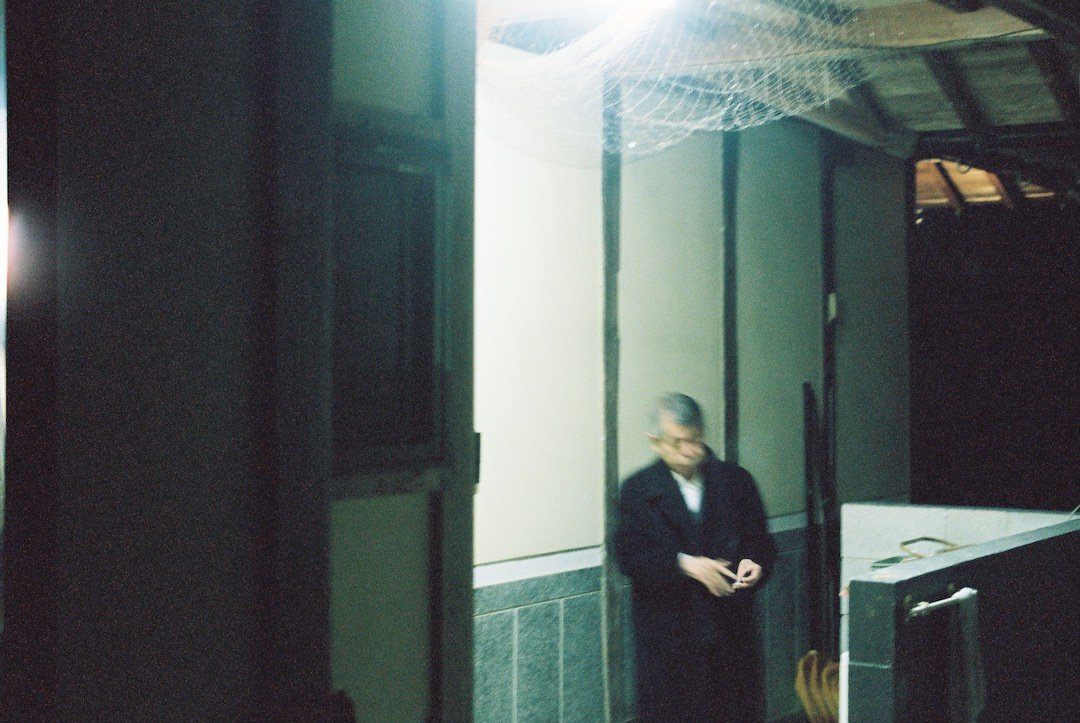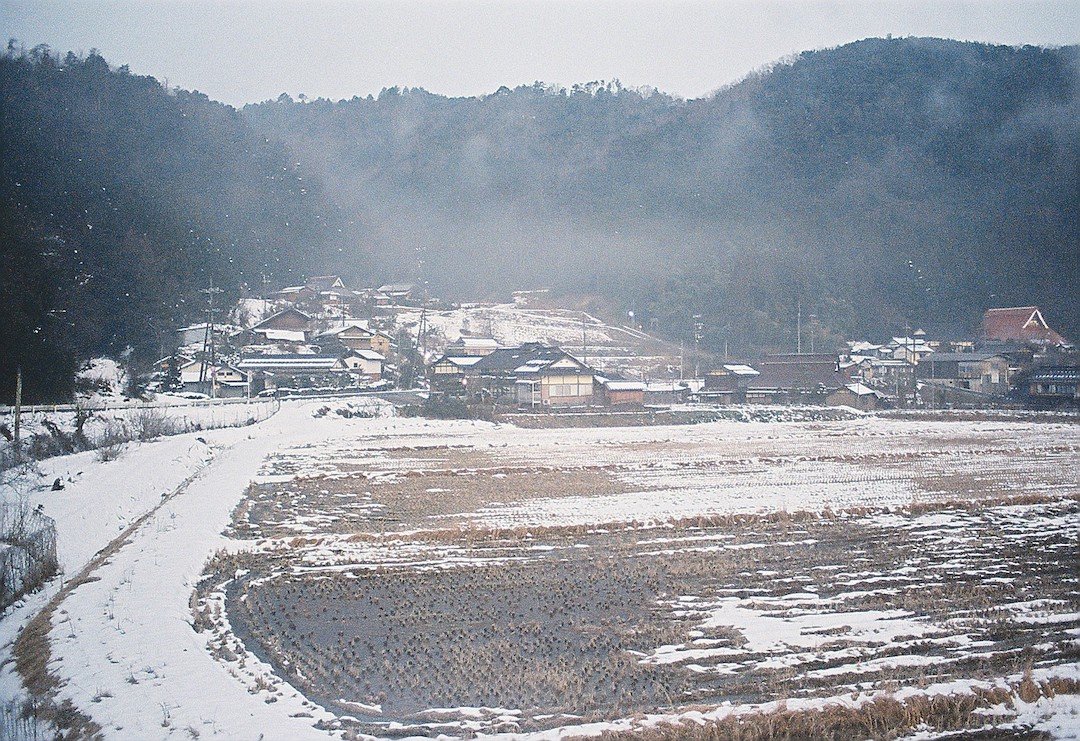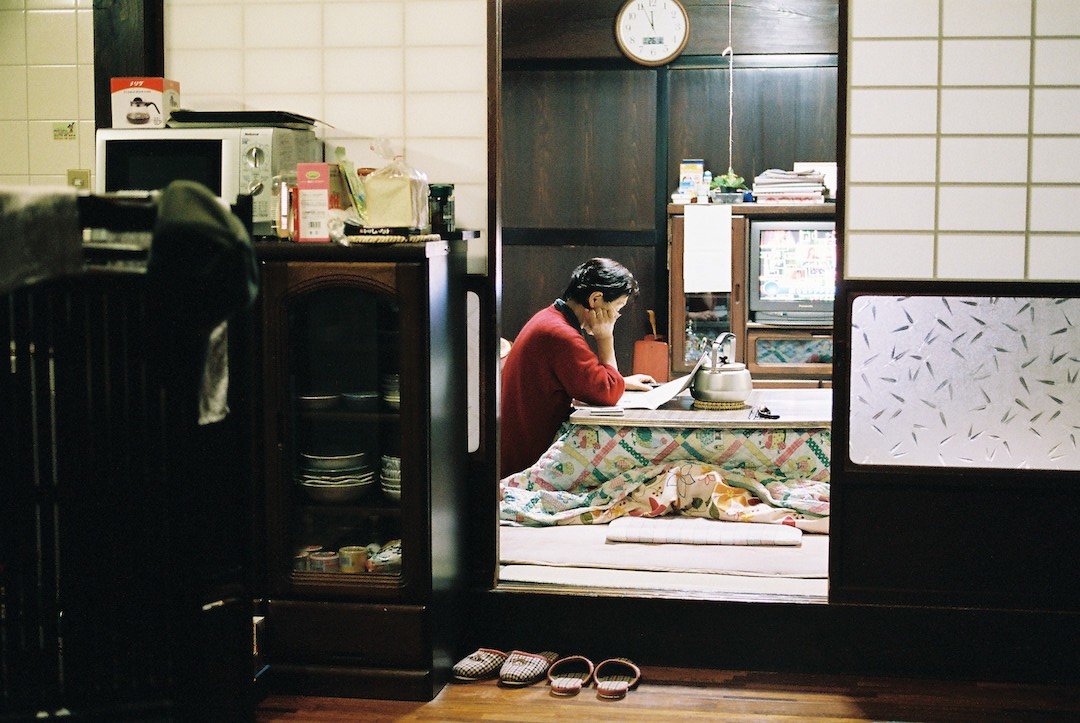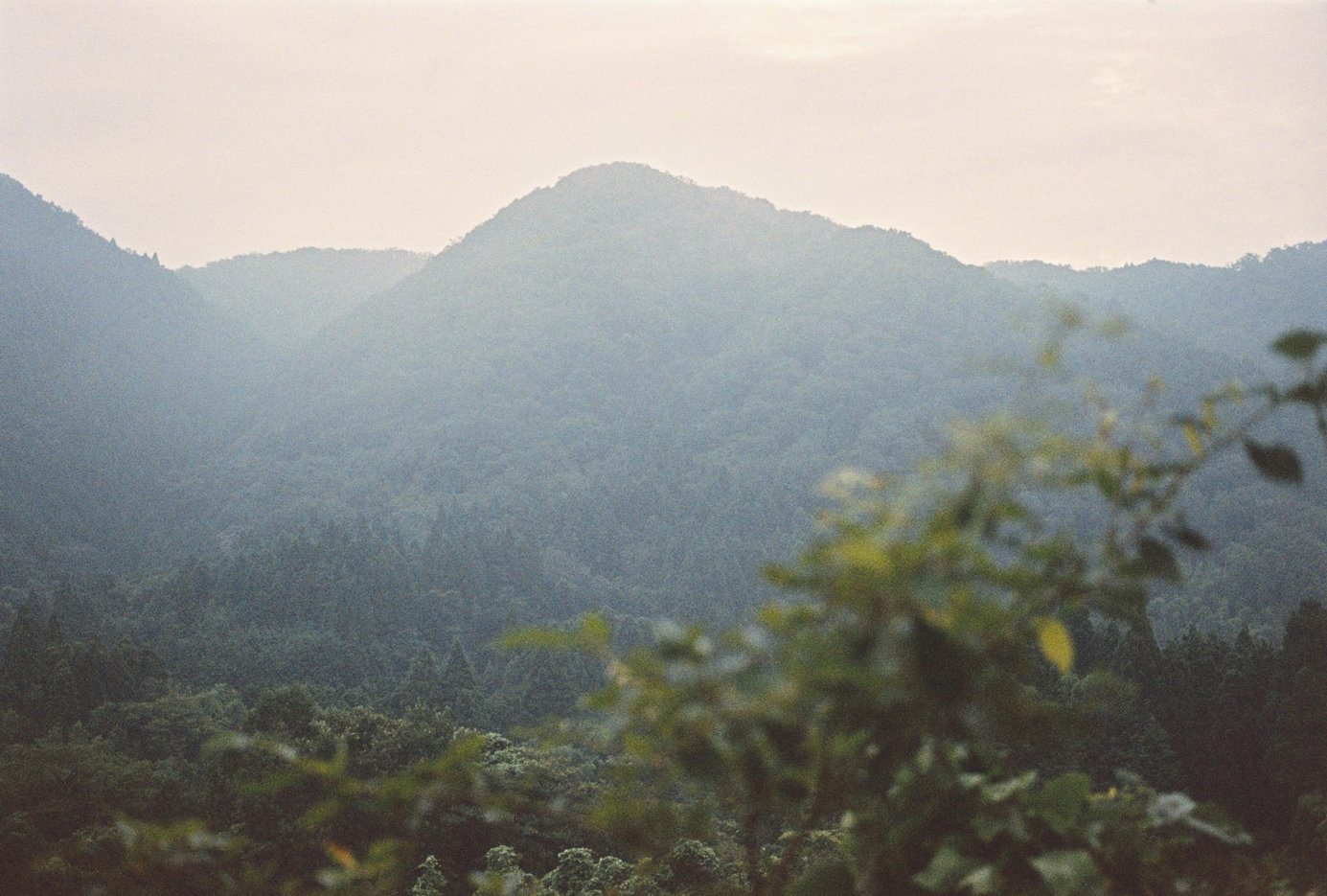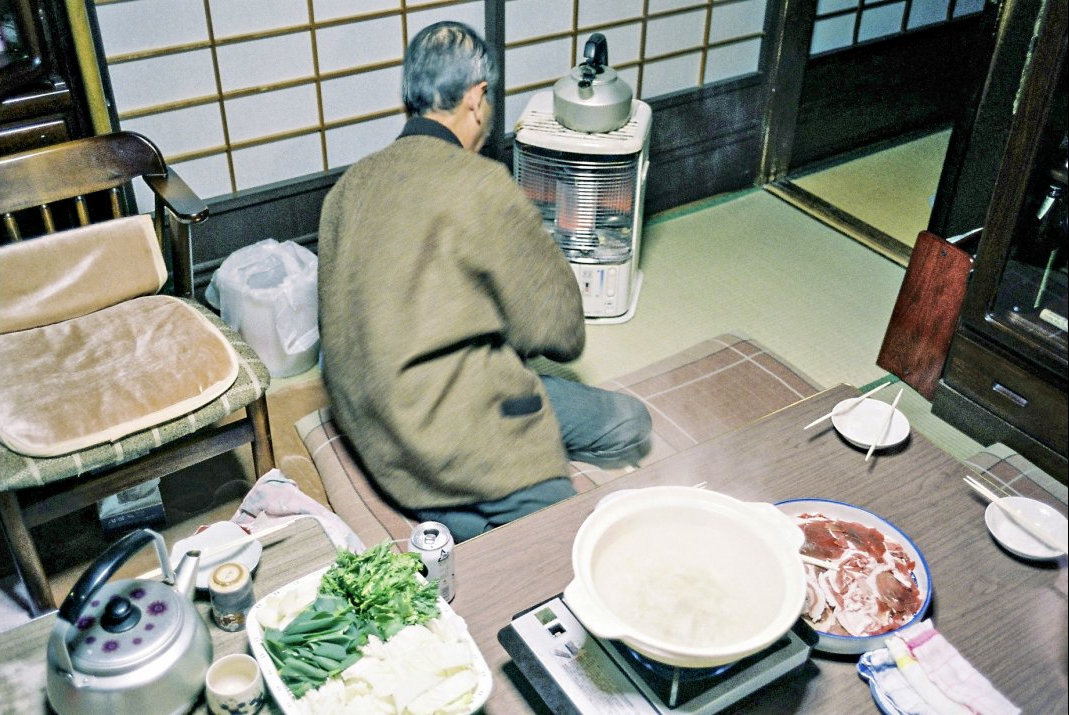The Works and Days (of Tayoko Shiojiri in the Shiotani Basin) CW Winter Anders Edström
USA/SE/JP/UK-2020, 480 Min. OmeU
Der Film wird in 2 Teile gezeigt:
Part 1: 223 Min, Part 2: 295 Min. mit jeweils 19 Min. Pause inkl.
Regie
C.W. Winter & Anders Edström
Kamera
Anders Edström
Drehbuch (Tagebucheinträge von Tayoko Shiojiri)
C.W. Winter
Ton und Schnitt
C.W. Winter
Mit
Tayoko Shiojiri, Hiroharu Shikata, Ryo Kase, Mai Edström, Kaoru Iwahana, Jun Tsunoda, Masahiro Motoki
Produktion
General Asst., Anders Edström, Silver Salt Films
Verleih
Filmgarten
- English
- Français
- Deutsch
“The first rule in farming is that you are never to hope for an easy way. The land demands your effort.”
The Works and Days (of Tayoko Shiojiri in the Shiotani Basin), the second dramatic feature from directors C.W. Winter & Anders Edström, is an eight-hour fiction shot for a total of twenty-seven weeks, over a period of fourteen months, in a village population forty-seven in the mountains of Kyoto Prefecture, Japan. It is a geographic look at the work and non-work of a farmer. A description, over five seasons, of a family, of a terrain, of a sound space, and of a passage of time. A georgic in five books.
Set in the Shiotani Basin, a short train ride from Kyoto, the long- awaited return of C.W. Winter and Anders Edström, a decade following THE ANCHORAGE, patiently accompanies Shiojiri Tayoko over five seasons in her small village of 47 predominantly elderly people. Though it’s equally concerned with observations of nature and the simple way that life itself is lived, partway through the film a narrative gradually asserts itself, in the worsening sickness of Tayoko’s husband, Junji – though the presence of death is never far from the surface, whether seen through periodic visits to gravesites, fatal snakebite, the hunting of animals for food, or a fantastical story (told via subtitles) of a soldier’s return home from WWII to commune with the corpse of his deceased father. The film also illustrates the death of a place and its way of life, a factor of population displacement, and the environmental destruction that’s irreversibly changing the relationship between the villagers and nature. Time, indeed, is of the essence, lasting 480 minutes. But, besides its length, it has little in common with “slow cinema,” mainly due to Winter’s extremely precise editing and the immersive approach and attention to detail and the constant attention to commonplace beauty. (Mark Peranson | Viennale)
« La première règle en agriculture est de ne pas chercher la facilité. La terre exige des efforts. » (Géorgiques, Virgile).
Au fil de cinq saisons, Les Travaux et les Jours suit le quotidien d’une agricultrice dans les montagnes de la préfecture de Kyoto, dessinant le portrait d’une famille, d’un terrain, d’un paysage sonore et du temps.
Acht Stunden sind ein Jahr. Dieser Film mag lang erscheinen; er belohnt aber die Geduld, die man ihm entgegenbringt, seinerseits mit der Aufmerksamkeit, die er seinem Gegenstand widmet: den Geschehnissen in der Familie der Tayoko Shiojiri, die in einem großen Haus in einem Dorf an einer Durchgangsstraße wohnt, eingebettet in die Berge der Provinz Kyoto. Täuschend kunstlos wird das alltäglich Beiläufige aufgezeichnet – die Arbeit auf dem Feld, die Sorge füreinander, der nachbarschaftliche Umgang – und mit der Zeit als eigentliche Qualität der Existenz ersichtlich. Und im graugrünen Grasbüschel am Wegesrand, gleich neben der schlammigen Pfütze, liegt die wahre Schönheit. (Alexandra Seitz | Viennale)
Goldener Bär - Bester Film Encounters Berlinale
Punto de Vista - Grand Prize für Bester Film
Entrevues Belfort - Prix One + One
Black Canvas - Bester Filmpreis
Pressespiegel
-
Jacques Rivette once wrote that a good film begins with something being wrong. In The Works and Days there is something wrong in almost every shot, something that makes us look more closely, more attentively, until we realize that it’s not the shot that is wrong but the way we normally look at things. Those images do not want anything from us, they ask everything of us.
-
The film is a life event in and of itself. Its homey environs and lushly photographed natural world induce a heightening of the senses and an attention to lovely subtleties of light, color and fellow feeling.
-
One of the best films of the year. At once intimate and expansive…. More than a film to watch, The Works and Days is an experience that engulfs.
-
Masterful. A monumental vision that earns its runtime.
-
An utterly confident, magisterial effort that will stand the test of time. The Works and Days is a salute to the possibilities provided by cinema, a celebration of life.
-
Epic. Uncommonly poignant, even profound. A comprehensive look at a vanishing way of life.
-
In a thousand variations of penumbra and darkness, The Works and Days is at once a filmed diary, a topographical survey, and the memory work of a village in the process of shrinking. Though all this says little of the hypnotic experience and poetry provided by this work, a film that is as much sonic as visual. Through a tight edit, never contemplative, this film, without programmed responses, sows in our minds a multitude of questions: how do we gaze at a landscape, what do we retain, what makes a story? The answer may lie in a tree whose leaves, filmed against the light of the sky, end up drawing a resting face. Only the imagination counts. And in front of The Works and the Days, we can dream.
-
By far the best movie of the year. A tremendous cinematic pleasure. An unforgettable picture and sound screening experience. And a film that will remain in the history of cinema.
-
A once in a generation film…A work that thrives thanks to its profound intimacy…Concluding with one of the truly great final acts in recent memory. The Works and Days is a dense, layered, one of a kind masterpiece…A ground-shattering achievement.
-
The Works and Days: present and earthbound, like an old woodpile, alive with termites. The length is necessary, natural, and is the least of what’s registered in viewing. The pleasures are immediate and moment-to-moment: the rhythms that emerge, dissolve, mutate, re-emerge; the plain company of people and the texture of the world, made strange; the film’s rigor and ease both, the freedom of transgressing rules established. The full weight of the experience is latent, blossoming late and with force; as is the narrative, taking shape out of the dirt and, diffusely, following it back down again. The deep, disarming sense of mystery is central, and it’s the reason Winter and Edström hold tight to the fiction (or reenactment) on a roiling canvas of reality. The form exists to bottle lived experience, to make it legible, and transmissible, and to set it roaming inside its parameters. Hence the default orientation of the camera is eye-level, looking down. It’s a transparent viewpoint that grounds vision, making no great secret of the apparatus, instead yielding to what’s being looked at.
-
The natural and the cyclical. Destiny as the corporeality of myth. Looks and acts. What endures. And a potential future. In this torrential film by C.W. Winter and Anders Edström, all this takes shape slowly, as in a burly and dense novel that delves into the depths and in which, from the particular, blossoms a vision of the universal. We should first start with the title, as it always should be with great films. Works and days, a declination of daily life that finds its essence in the minimal and nearly imperceptible movement of objects and affects. Like a (micro) family cosmology that slowly reveals itself, peacefully, minimally…An anthropological and metaphysical ritual on the flow of things…An act of magical realism where the sounds themselves become a space for evocation and continuous perspectival change…Here then is a formal approach in which existential drama, be it even death, appears only as a necessary and transitory moment, almost absorbed by the surrounding nature…The strength of all this fresco remains a certain suspension, not giving a precise shape to those who live in the novel, a turbid swarm of life that escapes being overly-ordered by thought and writing. It is a unique, poetic phrasing…evoking both a presence of the past and an absence of certain aspects of the present…The visual and associative grammar of this mass of images, which goes beyond the simple meditative experience, essentially starts from a space and allows the stories it contains to flow into existence…Here is the ghost of Ozu as an evocation of generations and identities, in every timid, ostensible, and elegiac hint of a past in false starts. Tayoko reads off-screen, as if by chance, from minimal diaries, so similar in their power to the famous ones of Ozu, with that light and crystalline touch tracing aspects of life almost unseen…Here is the blossoming of life, making relevant what is marginal, with the expression of the smallest moment, even the most casual and inadvertent, and the pure revelation of it all…The manifestation of something that comes from within, the expression of duration, tangible, visual, and practicable in its soundscape. There are confessions and stories in the film that have the fragility of memory and the provocation of epiphany…And it is precisely the editing, which in this film seems the doing of a sublime worker camouflaged in the landscape, creating an amazement of the unexpected, a rewriting that brings us into the temporary presents to which we are constantly called. And finally let's go back to the extreme, yet very simple, conceptualization of that title. To Hesiod (Ἔργα καὶ Ἡμέραι, Erga kài Hemérai, The Works and Days) and perhaps to Rossellini, to his The Iron Age, to the inevitability of the condition of man forced to work in order to survive, but at the same time an ode to virtue and to open space, to an existence from which is revealed the essence of dignity…In this, every spatial form shows itself in its definitively temporal aspect; a great game that only cinema, and perhaps some great novels, can access.
-
This is not the story of a picturesque country setting; it is instead about how Edström and Winter squeeze out the experience of a place: by a litany of images but also by an absence of images, by a richness of sound but also of silence…The film abolishes all relevance of a border between fiction and documentary and makes us live a rare and overwhelming immersion in a particular place, a secret world — but in this world hide a thousand worlds closer than we think. Crowned at the Berlinale in the excellent Encounters section, The Works and Days (of Tayoko Shiojiri in the Shiotani Basin) is a small masterpiece that one imagines as quite unforgettable.
-
There will be no more monumental film this year than The Works and Days…Its risk-taking, its ingenuity of means, its variety of methods, and its multiplicity of references separate The Works and Days from other duration exercises in cinema…It is undoubtedly one of those rare films to contain, humbly, just about everything of a lifetime.

